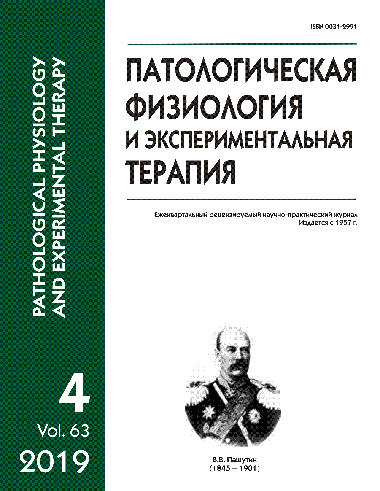Antibodies to the neurotransmitters, dopamine, norepinephrine, serotonin, glutamate, and gaba, in chronic alcohol dependence
Abstract
Aim. To compare levels and possible roles of serum autoantibodies (aAB) to the neurotransmitters, dopamine, noradrenaline, serotonin, glutamate, and GABA, in alcohol-dependent patients, patients with depression, and healthy individuals. Methods. Blood serum was collected from patients aged 40-55. The first group (n=56) included patients with alcohol dependence (F10.2 according to the ICD10). The second group (n=24) included patients with a depressive episode or recurrent depressive disorder (F32 and F33). Serum from 36 healthy donors of matching age and sex was used as the control. Concentrations of serum autoantibodies to dopamine (DA), norepinephrine (NE), serotonin, glutamate (GLU), and GABA were measured using solid-phase enzyme immunoassay (ELISA) on polystyrene 96-well plates sensitized with respective test antigens. Neurotransmitters conjugated with bovine serum albumin (BSA) were used as test antigens. Statistical analysis was performed using the Statistica 6 software with non-parametric Mann-Whitney U-test and Fisher’s exact test. Difference was considered as significant at p<0.05. Results. Patients with alcoholism differed from the group of healthy people in a higher content of serotonin aAB whereas levels of aABs to DA, NE, GLU, and GABA practically did not differ from control values. In some patients with alcoholism, the underlying disease was associated with depressive disorders. Based on this feature, the total group of patients was divided into two subgroups, patients with alcoholism without a comorbidity and patients with alcoholism complicated by depressive disorders. The group of patients with alcoholism without a comorbidity differed from healthy individuals only in an increased level of serotonin aAB. In contrast, patients with alcoholism and depressive disorders had significantly decreased levels of aABs to DA, NE, and GABA compared to the control group and to patients without a comorbidity. Comparative analysis showed the absence of significant differences in aABs to DA, NE, GLU, and GABA between patients with alcoholism and depressive disorders and patients with depression. At the same time, the level of serotonin aAB was higher in patients with a comorbidity than in control and was close to that in alcoholism. Patients with alcoholism without a somatic pathology were divided into two subgroups, with high and low levels of NT aAB. In the majority of patients, levels of aABs to DA, NE, and GABA were significantly lower than in healthy individuals. No significant difference in aABs to DA, NE and GABA was found between patients with alcoholism and low aAB, patients with alcoholism complicated by depression, and patients with depression. Levels of aABs to serotonin and GLU practically did not differ from the control. Conclusion. Low levels of aABs to DA, NE, and GABA can be considered as an objective diagnostic criterion for the stage of the disease. An associated increase in serotonin aAB may indicate transition from exacerbation to implementation of the pathological drive.






